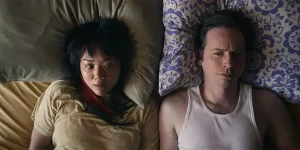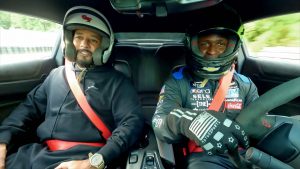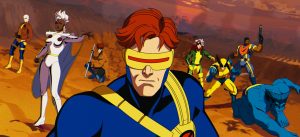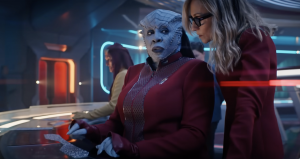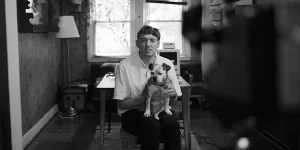
There are many standards by which we can measure the influence of the Mad Max franchise. The series consists of five excellent movies, all made by Australian filmmaker George Miller and a host of co-creators. The series launched the career of Mel Gibson who, until his hate-mongering came to light, was one of the most engaging movie stars of the 1980s and ‘90s. And it defined the idea of the post-apocalypse so much that revved-up machinery and bondage gear has become the de facto look of the end of the world.
At their center, though, the Mad Max movies are deeply personal stories about two things: the way humans destroy themselves with their own inventions, namely the motor cars and the gas they guzzle, and the way communities and even empathy endure in the Wasteland.
Although Miller helms each of the entries, the franchise has evolved over its 45-year existence. Tom Hardy stepped in as cop-turned-wandering-do-gooder Max Rockatansky after Gibson left, and more digital effects have come to complement the practical work that made the future savage. For that reason, ranking the Mad Max movies is less a matter of judging them on aesthetic merits and more an examination of which films best realize the battle for sanity in a world gone mad.
5. Mad Max Beyond Thunderdome (1985)
Mad Max Beyond Thunderdome has always been saddled with charges of watering down the franchise. By 1985, Mel Gibson had gone from handsome but gruff Aussie weirdo to potential Hollywood leading man. Furthermore, Beyond Thunderdome put Max in charge of a group of children and against an A-lister in the form of Tina Turner as Aunty Entity. Most importantly, Miller was still grieving the death of Byron Kennedy, the co-creator of Mad Max and Miller’s partner in insanity who died in a helicopter accident in 1983. Miller made Thunderdome, in part, as a way to work through his grief, and even asked George Ogilvie to co-direct. That choice, however, resulted in a film with a divided tone—divided from itself and the other films.
Valid as fan critiques might be, they overstate the differences between Beyond Thunderdome and other Mad Max films. Beneath its Hollywood trappings, Beyond Thunderdome has the same aesthetic and action that made The Road Warrior so thrilling, if albeit in a more children-friendly framing. Locations such as Bartertown and characters like the Master Blaster make Beyond Thunderdome a worthy film, even if it doesn’t quite match the others.
4. Mad Max (1979)
Anyone who revisits the first Mad Max will be shocked by its small scale. Where everything from The Road Warrior out created a whole new post-apocalyptic world, the first Mad Max stays largely grounded. Sure, things are getting bad in the film’s dystopian vision of Australia, but where isn’t that true? What’s most interesting about the original movie, then, is that we are not quite in the Wasteland when things start.
The pre-apocalyptic setting makes Mad Max stand out a bit more from the others, but all of the essential details are present. Miller and Kennedy, whose story idea the former turned into a proper screenplay with co-writer James McCausland, understood the power of motor vehicles and the havoc they can wreak. Already bits of madness sneak into Gibson’s more grounded and raw take on Max, too, which makes his battle with Hugh Keays-Byrne’s charismatic Toecutter feel like a battle for the future. It’s a battle Max loses.
3. Furiosa: A Mad Max Saga (2024)
Every Mad Max movie after the original has a sense of myth, but none like the prequel Furiosa: A Mad Max Saga. As opposed to the breathtaking propulsion of every other entry, Furiosa takes things relatively slow, breaking the story up into chapters to trace the tragic backstory of Furiosa, portrayed here by Alyla Browne and Anya Taylor-Joy.
Co-written by Miller and Nico Lathouris, and based on extensive material the two developed while making Fury Road, Furiosa shows an alternative reaction to the end of the world. Although Max goes mad, Furiosa tries to hold onto the humanity left by her late mother Mary Jabassa (Charlee Fraser). That humanity gets tested and deformed by Dementus, played by an unhinged Chris Hemsworth, whose own tragedy transforms him into a mercurial monster. With Browne and Taylor-Joy’s evolving takes at the center and its emphasis on myth, Furiosa lays bare the compassion and empathy that’s always been in the Mad Max franchise and turns it into an epic writ large across the Wasteland.
2. Mad Max 2: The Road Warrior (1981)
Ten years ago, everyone would have agreed that The Road Warrior perfected the Mad Max franchise. No longer teetering on the edge of oblivion, The Road Warrior pushes Max all the way into the Wasteland where he finds his calling. His wife and child are dead, so are the people responsible. Now Max must wander a world that no longer makes sense.
That tension between Max’s madness and his heroism drives The Road Warrior. But the pleasure comes in seeing how Miller, who co-wrote the script with Terry Hayes and Brian Hannant, realize the fallen world. Lord Humungus (Kjell Nilsson), “The Ayatollah of Rock and Rolla,” takes the Toecutter villain model to a new extreme, and the Feral Kid (Emil Minty) points to the new future. Furthermore, The Road Warrior features the introduction of a narrator, which later entries will call a History Man, solidifying Max’s role as a folk hero for the new age.
1. Mad Mad: Fury Road (2015)
Even today, Mad Max: Fury Road feels like a miracle. Thirty years had passed since the last Mad Max entry, and although Miller continued to work, it was mostly on the Babe and Happy Feet movies for families. What could the 70-year-old director do in the action genre that he hadn’t already done better in the 1970s and ‘80s?
Turns out, everything.
From its very first shot, Mad Max: Fury Road is an all-out assault, a movie that introduces new concepts and set-pieces at such a rapid pace that nobody really cares that it’s about people driving to one place and then turning around and driving back. Tom Hardy proves himself the perfect choice as the new Max, now inarticulate after too long in the Wasteland, paired with a never-better Charlize Theron as the stoic Furiosa. Moreover, the script (or extensive collection of storyboards) that Miller co-wrote with Brendan McCarthy and Nico Lathouris, runs on empathy, the insistence that demagogues like Immortan Joe (Keays-Byrne) will never be the things they promise, and that hope, like water, still flows in the Wasteland.
With minimal dialogue and exposition, but maximalist filmmaking and pure cinematic flourishes that harken back to the silent era, Mad Max: Fury Road remains one of the very best movies made in this century or any other.
The post The Mad Max and Furiosa Movies Ranked appeared first on Den of Geek.
